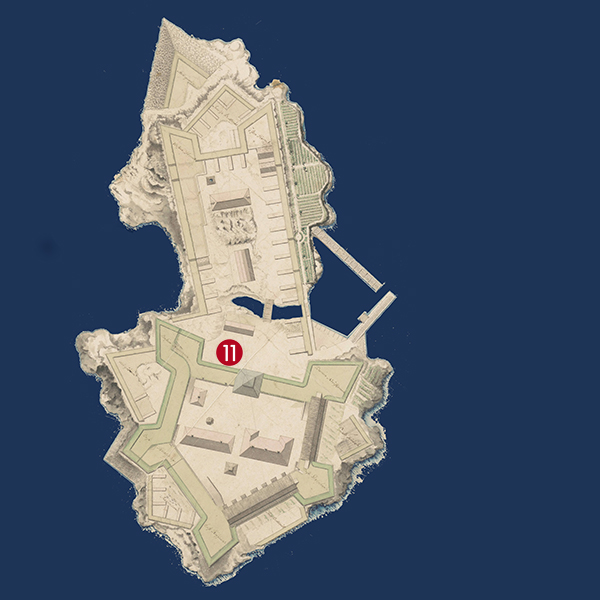


During all of the 1700s, Nya Älvsborg is used as prison for prisoners from the Västgöta part of the county of Älvsborg, as well as from Gothenburg city.
Offenders from the county of Bohus are placed at the fortress of Bohus, and Marstrand is the new home for people sentenced to penal servitude from all of west Sweden. During the first half of the 18th century Nya Älvsborg is only housing 5-10 prisoners.
During the 1780s there are three rooms that make up the prison, each one about 25 square meters. The first one is meant for women and has bunks for up to 14 people. The second one is meant for detained inmates awaiting verdicts.
This room can fit 17 people. The third vault is for convicted people and fits 17 inmates as well. The rooms are humid and in dire need of reparations, creating harsh living conditions. In each lodgement is a fireplace, and daylight is provided through a small barred window in the wall.
At night the only light that can be found is from the fireplace and oil lamps. The interior is made up of, apart from the bunks, just tables and chairs.
Här kan du boka plats på The first prison cells!
Eventet startar den {je_event_startdatum_event:j M} kl {je_event_startar}
{je_event_popup-teext}